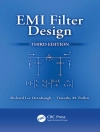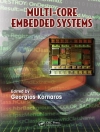Expert guidance on technologies to build the Internet of Things (Io T) from electrical engineering and power industry perspectives
Io T for Smart Grid presents advanced Internet of Things (Io T) technologies that are utilized in various aspects of smart electrical systems, especially monitoring, diagnosis, automation, and industrial evolution, from the point of view of both electrical engineering and power industry facilities and resources.
The book describes how Io T has expanded the use of wireless sensor networks (WSN) to play a vital role in connecting power industry facilities and resources to reduce energy consumption and costs. It also explores concepts of e-mobility that include smart parking, vehicle monitoring, and charging, and considers future challenges such as security and privacy concerns in transactive systems and scalability and standardization issues.
Later chapters describe communication protocols for transactive Io T, smart grid integration, cybersecurity challenges, smart energy management, and more. Relevant examples and practical case studies are included to enrich and reinforce learning.
Edited by a team of highly qualified professionals in the field, Io T for Smart Grid explores additional topics such as:
- MQTT, Co AP, and other protocols in transactive systems and WSN diagnostic tools for ensuring reliability and performance
- The role of sensors and actuators in transactive models and significance of transactive Io T in modern applications
- Remote control and automation in smart grids, utilizing Io T for demand response programs, load shifting strategies, and dynamic pricing models and Io T integration
Io T for Smart Grid is a definitive reference for identifying and applying advanced technologies and concepts and a highly valuable learning resource for students, researchers, consultants, and utility engineers in the design, use, and maintenance of electrical power systems.
Tabela de Conteúdo
About the Editors xxvii
List of Contributors xxxi
1 Introduction to the Internet of Things 1
Anbazhagan Lavanya, Jayachandran Divya Navamani, and Rahiman Zahira
1.1 Introduction 1
1.2 Evolution of Io T 2
1.3 Need for Io T 3
1.4 Energy Management 4
1.5 Main Components Used in Io T 5
1.6 Io T Devices 6
1.7 Io T Characteristics 7
1.8 Io T Market Share 11
1.9 Conclusion 14
References 15
2 Io T Fundamentals: Platforms, Architectures, and Sensor Technologies 17
Naseer Ahamed Javed, Yogesh Rajkumar, and Kallankurichy P. Kaliyamurthie
2.1 Introduction 17
2.2 Overview of Io T System Architectures and Design Principles 17
2.3 Exploring Io T/M2M Systems and Their Role in Connectivity 23
2.4 Introduction to Sensors and Transducers in Io T 25
2.5 Lo WPAN Network Management Protocol (LNMP) 27
2.6 WSN Diagnostic Tools: Ensuring Reliability and Performance 29
2.7 Overview of Io T Communication Technologies 31
2.8 Practical Applications of Io T Platforms, Sensor Technologies and Communication Protocols 34
References 40
3 Communication Protocols for Transactive Io T 43
A. Kamalasegaran, G. Kabilan, and P. Sriramalakshmi
3.1 Introduction 43
3.2 Transactive Systems in Smart Grids 43
3.3 MQTT, Co AP, and Other Protocols in Transactive Systems 45
3.4 Data Distribution Service (DDS) 49
3.5 Edge Computing and Real-Time Implementation 50
3.6 Reliability and Scalability 54
3.7 Case Studies and Real-Life Implementations 57
3.8 Conclusion 58
References 59
4 Transactive Io T: Merging Transactions and Connectivity 63
Burhan Khan, Aabid A. Mir, Naser S. Almutairi, and Khang W. Goh
4.1 Introduction 63
4.2 Io T Integration with Transactive Models 64
4.3 Transactive Io T in Modern Applications 66
4.4 Economic and Market-Based Approaches 71
4.5 Transactive Io T System Architecture 73
4.6 Challenges and Solutions 78
4.7 Conclusion 81
References 82
5 Io T Devices in Transactive System 87
G. Jagadish and P. Sriramalakshmi
5.1 Introduction 87
5.2 Integration of Io T Devices for Data Collection 88
5.3 Role of Sensor 90
5.4 Sensor Types 91
5.5 Role of Sensors During Data Collection 92
5.6 Role of Actuators 93
5.7 Challenges Faced in Device Connectivity 95
5.8 Challenges in Data Security 96
5.9 Conclusion 101
References 101
6 Io T in Power Electronics: Transforming the Future of Energy Management 107
Dhandapani Lakshmi, Rahiman Zahira, Vallikanu Pramila, Gunasekaran Ezhilarasi, Rajesh K. Padmashini, Palanisamy Sivaraman, and Chenniappan Sharmeela
6.1 Introduction to Io T in Power Electronics 107
6.2 Io T in Power Conversion: Enhancing Efficiency and Reliability 112
6.3 Introduction to IIo T-Driven Automation 115
6.4 Future Prospects of Io T in Power Conversion 116
6.5 Regulatory and Standardization Considerations 119
6.6 Io T in Power Transmission for Long Distance 119
6.7 Conclusion 123
References 124
7 Harnessing Io T: Transforming Smart Grid Advancements 127
Pijush K. Dutta Pramanik, Bijoy K. Upadhyaya, Ajay Kushwaha, and Debashish Bhowmik
7.1 Introduction to Smart Grid and Io T Integration 127
7.2 Architecture of a Smart Grid Io T System 131
7.3 Remote Control and Automation in Smart Grids 137
7.4 Automated Load Shifting Strategies Using Io T 141
7.5 Io T Applications for Real-Time Monitoring of Smart Grids 142
7.6 Challenges in Implementing Io T in Smart Grids 151
7.7 Economics of Io T-Enabled Smart Grid 154
7.8 Smart Grid in India 167
7.9 Conclusions 169
References 170
8 Cybersecurity Challenges in Smart Grid Io T 175
Zain Buksh, Neeraj A. Sharma, Rishal Chand, Jashnil Kumar, and A. B. M. Shawkat Ali
8.1 Introduction 175
8.2 Research Background 178
8.3 Cybersecurity Challenges in Smart Grid Io T 183
8.4 Case Studies and Real-World Examples 194
8.5 Future Trends and Considerations 200
8.6 Conclusions 201
References 202
9 Io T-Based Monitoring for Substations 207
Rajesh K. Padmashini, Dhandapani Lakshmi, Rajasekharan Rajasree, Janarthanan N. Rajesh Kumar, Rahiman Zahira, Palanisamy Sivaraman, and Chenniappan Sharmeela
9.1 Introduction to Io T-Based Monitoring for Substations 207
9.2 Components of Substation Automation and Monitoring 208
9.3 Architecture of Substation Automation 209
9.4 The Need for Io T in Substation Monitoring 210
9.5 Automation and Control in Substation Environment 211
9.6 Substation Automation and Monitoring 213
9.7 Examples 215
9.8 Others 217
9.9 Conclusion 218
References 218
10 Io T Application in Condition Monitoring and Fault Diagnosis in Electrical Systems 221
Ravichandran Karthick Manoj, Dhandapani Lakshmi, Rajasekharan Rajasree, Sukumaran Aasha Nandhini, Palanisamy Sivaraman, and Rahiman Zahira
10.1 Introduction 221
10.2 Importance of Condition Monitoring (CM) in Electrical Systems 222
10.3 Enhancing Reliability and Performance of Condition Monitoring 223
10.4 Proactive Maintenance Strategies Enabled by Condition Monitoring 223
10.5 Methods of Condition Monitoring 224
10.6 Implementation of Vibration Analysis 225
10.7 Vibration 226
10.8 What Can Vibration Analysis Detect? 229
10.9 Block Diagram of Vibration Monitoring System 231
10.10 Industrial Applications of Vibration Analysis 232
10.11 Advantages of Vibration Analysis for Condition Monitoring in Electrical Systems 234
10.12 Disadvantages of Vibration Analysis for Condition Monitoring in Electrical Systems 234
10.13 Importance of Fault Diagnosis in Electrical System 235
10.14 Integration with Io T of Conditional Monitoring Electrical System 236
10.15 Real-Time Monitoring and Predictive Maintenance 237
10.16 Energy Management and Asset Performance Optimization 238
10.17 Safety, Compliance, and Future Trends 239
10.18 Future Trends in Io T Application in Condition Monitoring and Fault Diagnosis in Electrical Systems 239
References 240
11 Io T-Powered Robust Anomaly Detection and CNN-Enabled Predictive Maintenance to Enhance Solar PV System Performance 243
Kumaresa P. Punitha
11.1 Introduction 243
11.2 Io T Application in Condition Monitoring 244
11.3 Io T Application in Fault Prediction 245
11.4 Overview of Solar PV System Faults 245
11.5 Need for Io T and CNN Algorithm for Anomaly Detection of Solar PV System 247
11.6 System Description 248
11.7 Proposed Algorithm 248
11.8 Results and Discussion 249
11.9 Conclusion 254
References 254
12 Advancements in Smart Energy Management: Enhancing Efficiency Through Advanced Metering Infrastructure and Energy Monitoring 257
S. Nazrin Salma, A. Niyas Ahamed, and G. Srinivasan
12.1 Introduction to Smart Energy Management 257
12.2 Evolution of Energy Management Systems 258
12.3 Traditional Energy Management 258
12.4 Transition to Smart Grids 259
12.5 Role of Smart Meters and Advanced Metering Infrastructure 260
12.6 Effects on Contemporary Energy Systems 260
12.7 Digital Innovations in Energy Management 260
12.8 Smart Meters: Empowering Consumers 263
12.9 Revolutionizing Energy Consumption 263
12.10 Advanced Metering Infrastructure (AMI): Streamlining Energy 264
12.11 Case Studies of Successful AMI Implementations 264
12.12 Energy Monitoring and Management 265
12.13 Examples of Energy Management Practices 266
12.14 Illustrations and Case Studies in the Practical Application of Smart Energy Management 266
12.15 Optimization of Urban Grids and Io T Devices 266
12.16 Challenges and Opportunities in Smart Energy 267
12.17 Opportunities for Advancements 268
12.18 Real-Time Optimization 268
12.19 Automated Decision-Making 268
12.20 Enhancing Efficiency and Reliability 269
12.21 Real-Time Optimization of Storage Solutions 269
12.22 Managing Variability and Intermittency 269
12.23 Grid Resilience and Stability 270
12.24 Insights into Potential Vulnerabilities 270
12.25 Automation of Grid Operations 270
12.26 Regulatory Frameworks and Policies 271
12.27 Conclusion: The Future of Smart Energy Management 271
References 272
13 Io T for Power Quality Applications 275
Rahiman Zahira, Dhandapani Lakshmi, Shanmugasundaram Logeshkumar, Palanisamy Sivaraman, Chenniappan Sharmeela, and Sanjeevikumar Padmanaban
13.1 Introduction to Power Quality in Modern Electrical Systems 275
13.2 Power Quality Standards 276
13.3 Power Quality Solutions 277
13.4 IOT for Power Quality 280
13.5 The Role of Io T in Enhancing Power Quality 281
13.6 Architecture for Power Quality Management Using Io T 282
13.7 Io T Architecture for Smart Grid and Power Quality Applications 283
13.8 Io T Sensors and Devices for Power Quality Monitoring 286
13.9 Conclusions 287
References 288
14 An Io T and 1D Convolutional Neural Network-Based Method for Smart Building Energy Management 291
Aleena Swetapadma, Nalini P. Behera, Harsh Saran, and Saurav Kumar
14.1 Introduction 291
14.2 One-Dimensional Convolutional Neural Network 292
14.3 Proposed Method 292
14.4 Result 296
14.5 Discussion 298
14.6 Conclusion 299
References 299
15 Io T for E-Mobility 301
Shanmugasundaram Logeshkumar, Krishnakumar Shanmugasundaram, Rahiman Zahira, Palanisamy Sivaraman, and Chenniappan Sharmeela
Introduction 301
15.1 What Is Io T for E-Mobility? 301
15.2 Benefits of Io T for E-Mobility 302
15.3 Challenges of Io T for E-Mobility 302
15.4 The Future of Io T for E-Mobility 303
15.5 Various Considerations and Possibilities of Io T for E-Mobility 304
15.6 Conclusion 331
References 332
16 Standards for Internet of Things (Io T) 335
Mohamed Mustafa Mohamed Iqbal, Balasubramanian Nandhan, Sakthivel Sruthi, Ravikumar Mithra, Rajagopal Logesh Krishna, Rahiman Zahira, Balan Gunapriya, and Veerasamy Balaji
16.1 Introduction 335
16.2 Smart Grid, Smart Transportation, and Smart Cities 336
16.3 Standardization of Io T Environment 337
16.4 Io T Standards in Healthcare 338
16.5 Io T Standards in Agriculture and Food Industry 341
16.6 Io T Standards in Smart Home and Industrial Automation 347
16.7 Io T Standards for Disaster Management 351
16.8 Io T Standards in Cybersecurity and Data Science Domain 353
16.9 Research Scope for Future Work 355
16.10 Conclusion 355
References 356
17 Challenges and Future Directions 363
Burhan Khan, Aabid A. Mir, Nur F.L.M. Rosely, and Khang W. Goh
17.1 Introduction 363
17.2 Security and Privacy Concerns in Transactive Systems 366
17.3 Scalability and Standardization Issues 370
17.4 Emerging Trends in Transactive Io T 373
17.5 Future Developments in Transactive Io T 376
17.6 Policy, Regulation, and Ethical Considerations 378
17.7 Conclusion 380
References 382
Index 387
Sobre o autor
Rahiman Zahira, Ph D, SMIEEE, is an Associate Professor at B.S. Abdur Rahman Crescent Institute of Science and Technology, Chennai, India.
Palanisamy Sivaraman, SMIEEE, is a Research Scholar at Anna University, Chennai, India.
Chenniappan Sharmeela, Ph D, SMIEEE, is a Professor, DEEE, and an Adjunct Professor with the Centre for E-Vehicle Technologies and the Centre for Energy Storage Technology, CEG campus, at Anna University, Chennai, India.
Sanjeevikumar Padmanaban, Ph D, SMIEEE, is a Full Professor in Power Electronics with the Department of Electrical Engineering, IT and Cybernetics at the University of South-Eastern Norway, Norway.












